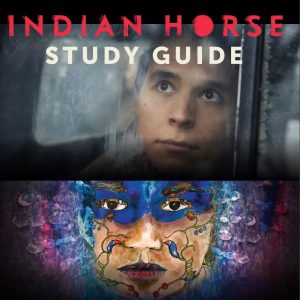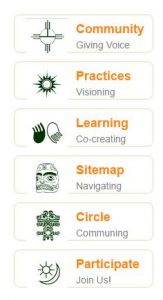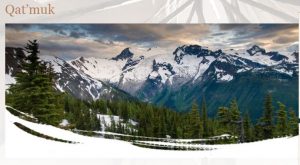http://firstnationspedagogy.com/ While searching for resources that promote the preservation of Indigenous culture I came across this website. The website is authored by June Kaminski, a PhD Candidate in the Faculty of Curriculum and Pedagogy at UBC with a focus on critical pedagogy, e-learning and nursing informatics. The mission of the site is to raise awareness of First Nations pedagogy around the globe and to promote the importance of the ways of knowing, learning, and teaching inherent to the traditional methods of informal and formal aboriginal education.
Category Archives: Module 2
Post #1: Center of Media Literacy
When researching tips for teaching media literacy, this website was the first hit in my search: http://www.medialit.org/. The website belongs to the Center of Media Literacy (CML) which is an educational organization that provides leadership, public education, professional development and evidence-based educational resources. It promotes and supports media literacy education as a framework for accessing, analyzing, evaluating, creating and participating with media content, through developing critical thinking and media production skills. The website contains some free (and some paid) resources based on this framework which can be used in the classroom.
Native Appropriations
Native Appropriations is a is a blog that critically discusses the ways that Indigenous people are shown in the mainstream, “Euro-American dominated, culture”. Active since 2010, the blog is run by Cherokee scholar Adrienne Keene. Some of the most talked about topics are “hipster headdresses”, the Native American mascot controversy and appropriation and misrepresentations of Native American cultures in big Hollywood blockbusters.
Graphic Novel: The 500 Years of Resistance
The 500 Years of Resistance by Gord Hill is a historical comic that showcases the documentation of radical activism, which enables individual citizens to question their government, and critique how history is built by media (the Internet) and on the pages of textbooks. The graphic novel challenges the representation of events from the Spanish colonization of the Americas (1492) to the Six Nations land reclamation (2006) focusing on how the European Invasion and colonization of the Americas violated Indigenous culture. Without a doubt, storytelling is an important element of Indigenous political activism, and in 500 Years of Resistance artfully articulates an anti-capitalist and pro-activist challenge to audiences.
Graphic Novel: The Absolutely True Diary of a Part-Time Indian
The Absolutely True Diary of a Part-Time Indian, which gives students a good perspective of what it was like living on a reservation in the US and what the main character, Junior, was going through. For those of you who haven’t read it, the book follows Junior, a 14-year-old boy living with his family on the Spokane Indian Reservation near Wellpinit, Washington for a school year. The book is written like a diary, moving from the first day of school to summer break. The book gives the reader a look into Junior’s life, which includes his drawings (which are funny at times), but often commenting on a much larger and accurate depiction of life on the reservation.
Shadows of the Indian: Stereotypes in American Culture
In Shadows of the Indian: Stereotypes in American Culture by Raymond William Stedman, pop culture images of the American Indian are used to draw out the implications of stereotypes in advertisements, film, and mass culture. Stereotypes from Westerns include the humble and comedic sidekicks like Friday and Tonto, the noble and vanishing savage, and the red rapist warrior. Stedman offers no narrative, but the curation of the collection sutures together illustrations that are an integral part of how the image and bodies of Indigenous individuals were manipulated by racist stereotypes from the 1960s onwards.
The Healthy Aboriginal Network and Native Realities
The Healthy Aboriginal Network (HAN), provides Indigenous youths with a positive and recognizable representation of Indigenous bodies. Another wonderful resource for our K-12 students is Native Realities. NR provides original and authentic representations of Native and Indigenous peoples through stories and texts that educate and entertain children, youth and adults. Featuring the incredible tales of Indigenous icons, First Nations freedom fighters, Aboriginal astronauts, and Native American superheroes whose stories have long been co-opted, unheard or ignored.
Module 2 Post 5: Indian Horse by Richard Wagamese

Description:
An excellent e-resource guide that aligns well the Indian Horse film and book, Indian Horse. The sections in the guide include an introduction, history of residential schools, hockey, and sports culture, and finally, land, language, and hope. I like the incorporation of the truths in storytelling as students are able to self-reflect on the idea that each character is larger than their own role. In other words, they can learn through others’ experiences and challenges.
There is also a section on Orange Shirt Day which I feel can be used to introduce this important day to the students. For more information on Orange Shirt Day, go to http://www.orangeshirtday.org/
The e-learning modules are specifically designed for secondary school level discussions in reference to clips in the film. This is useful for teachers to lead in-depth discussions on important themes and motifs.
Teacher Guide: http://www.indianhorse.ca/downloads/study-guide
Resource Link: http://www.indianhorse.ca/en/education
Module 2 Post 4: First Nations Pedagogy Online

Description:
First Nations Pedagogy Online provides an abundance of information pertaining to online learning and programs for aboriginal learners.
The website is divided into Community, Practices, Learning, Sitemap, Circle and Participate. In each section, there are more links to relevant websites and/or videos.
In Community, there is a discussion forum as well as videos on Elders Teachings, Nourishing the Learning Spirit, What is a learning Spirit?
In Practices, we learn that ABORIGINAL KNOWLEDGE:
- is a living process to be absorbed and understood, not a commodity to possess
- is both empirical (based on experience) and normative (based on social values)
- preference for experiential knowledge using a multiple intelligences approach
- values ability to learn independently by observing, listening, and participating
- values introspection, reflection, meditation, prayer, self-directed learning
- is structured by language and symbolic, verbal, and unconscious order
In Learning, there are an abundance of learning materials for childhood, secondary, post-secondary and general adult learning.
In Circle, Incorporating Aboriginal Wisdom to Promote Ecoliteracy is discussed through text and a series of videos. My personal favorite is “How Wolves Change Rivers”.

Credits to Sylvia Currie and June Kaminski for the development of this online resource.
Module 2 Post 3: Ktunaxa Nation Creation Story (Ktunaxa Nation website)

Description:
The creation story told by Ktunaxa Nation, who are the people that lived on the lands next to Kootenay and Columbia Rivers and the Arrow Lakes of British Columbia for more than 10,000 years. Qat’muk is where the Grizzly Bear Spirit lived and maintained a presence. Thus, the Ktunaxa have a stewardship kinship to the Grizzly Bear Spirit and Qat’muk.
Students learn about the story of chase and events that lead up to today’s landscape. There are hand-drawn photos to accompany and illustrate the Creation story.

Link: http://www.ktunaxa.org/who-we-are/creation-story/